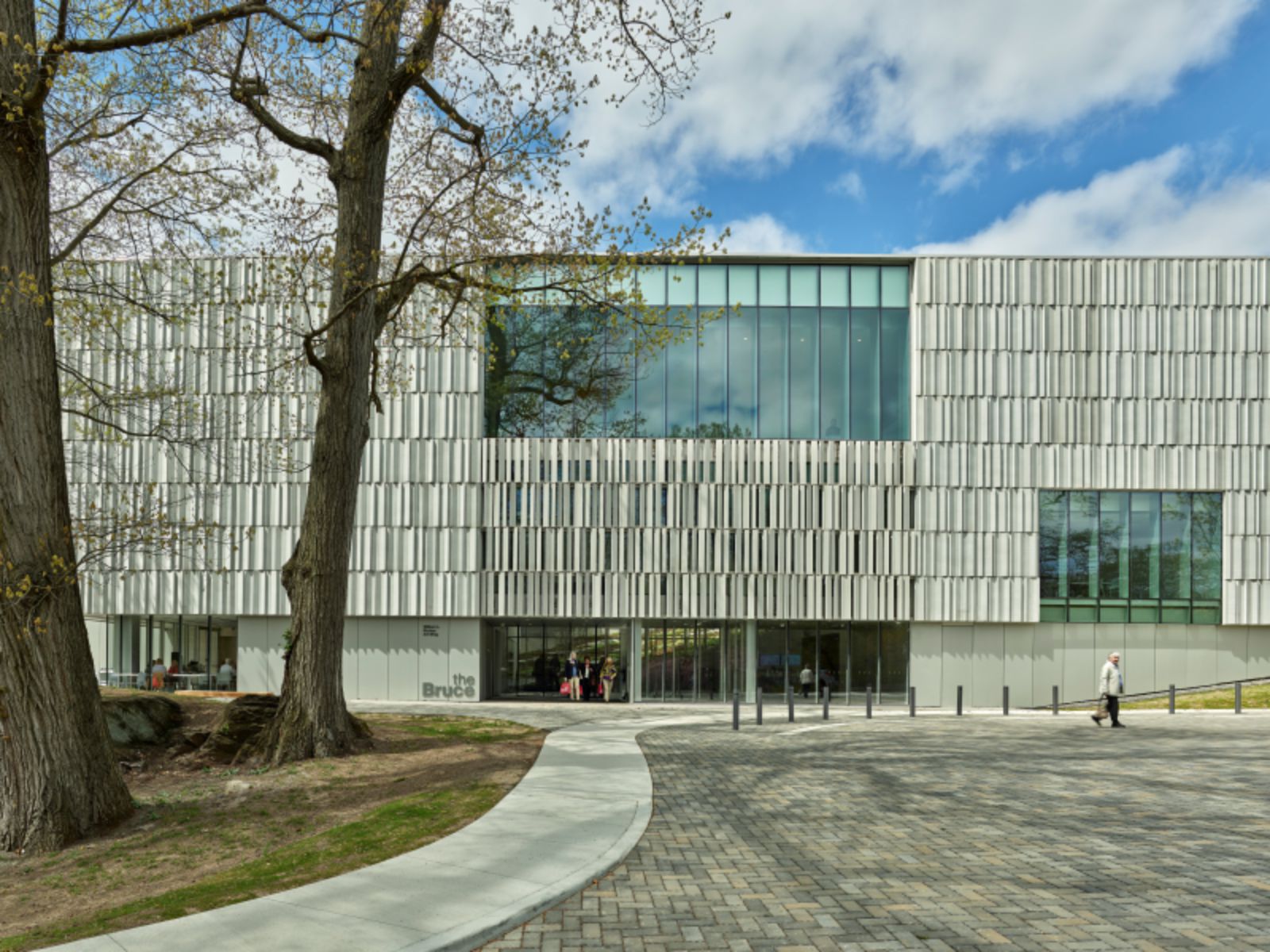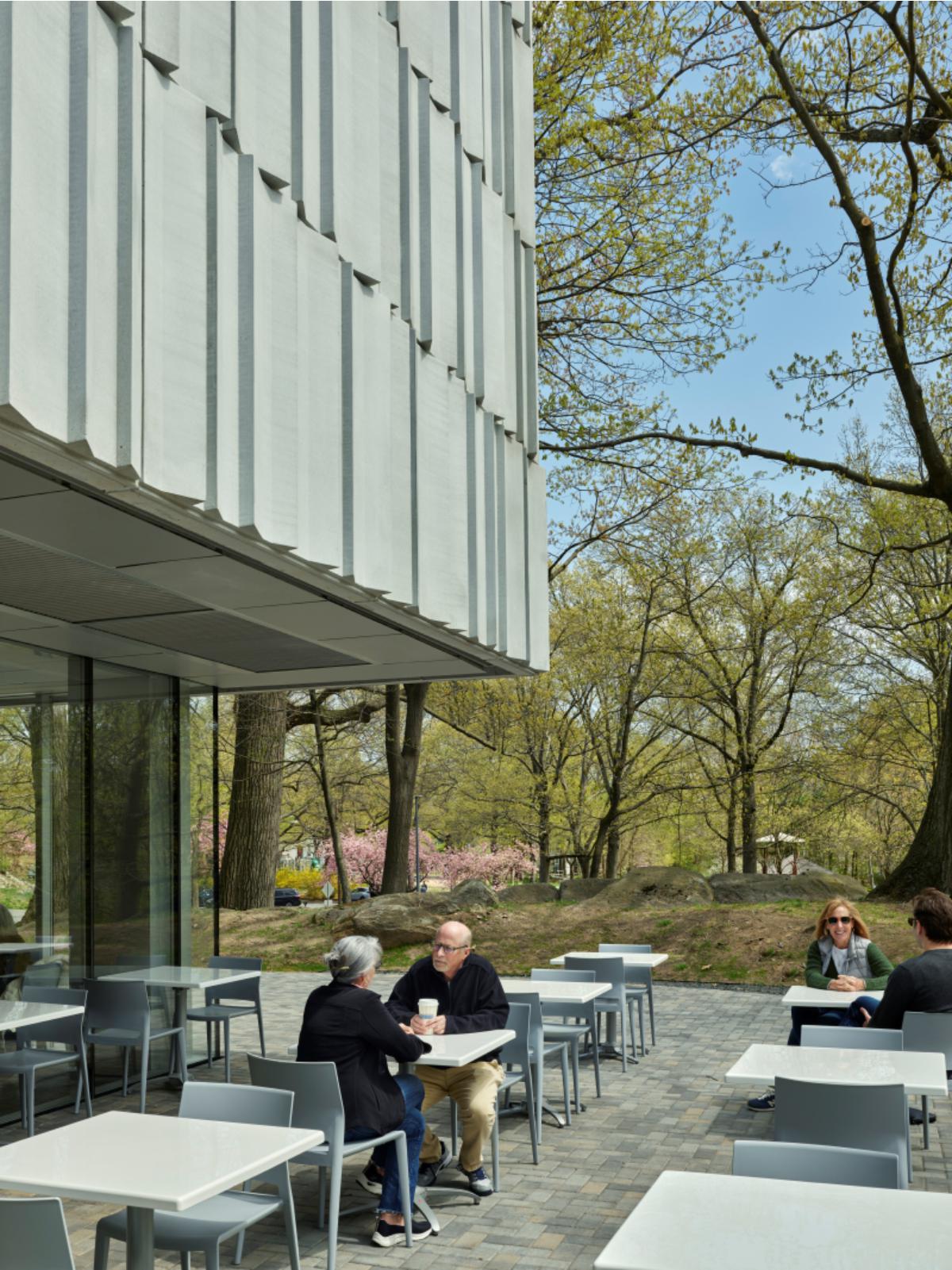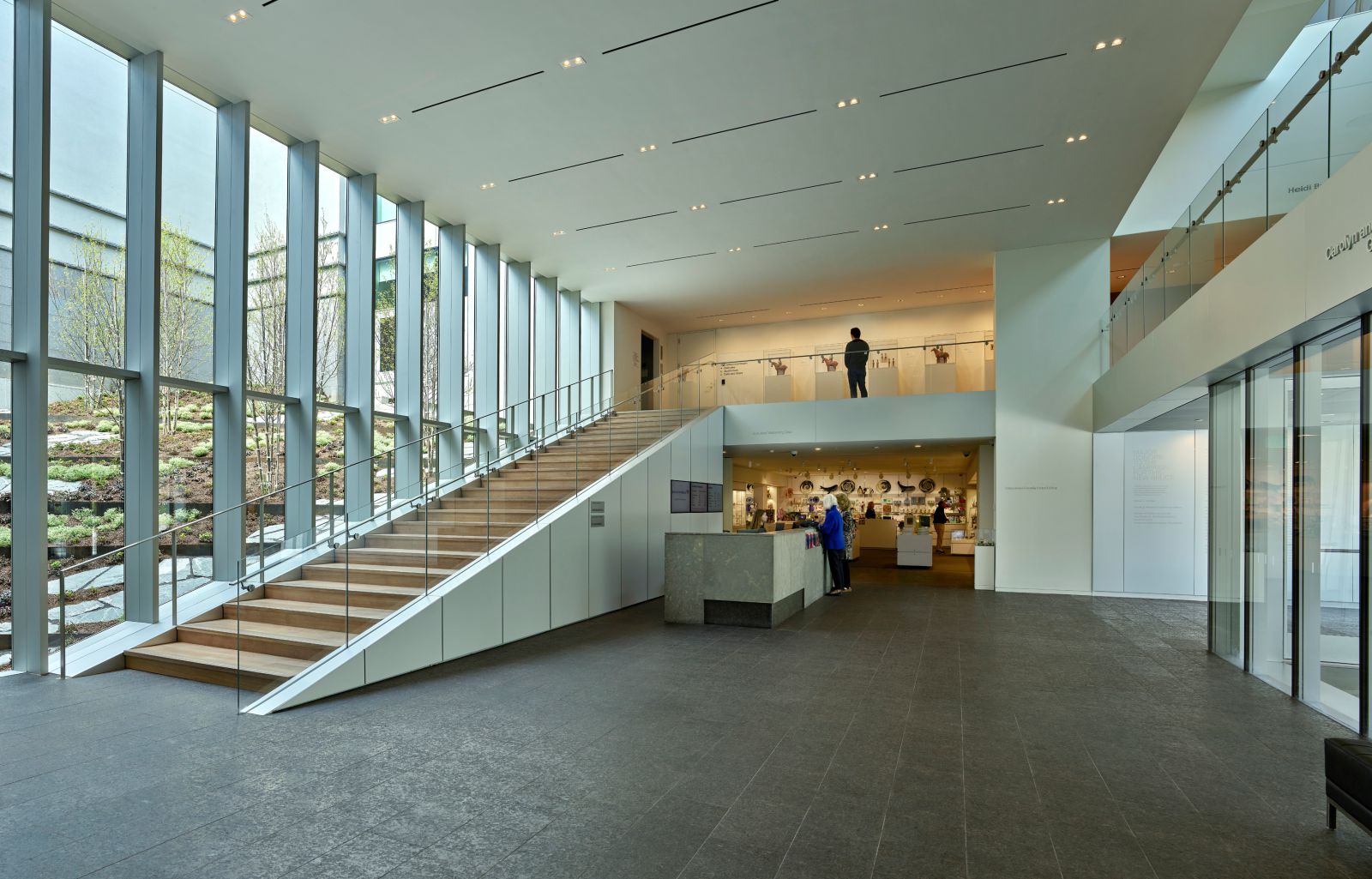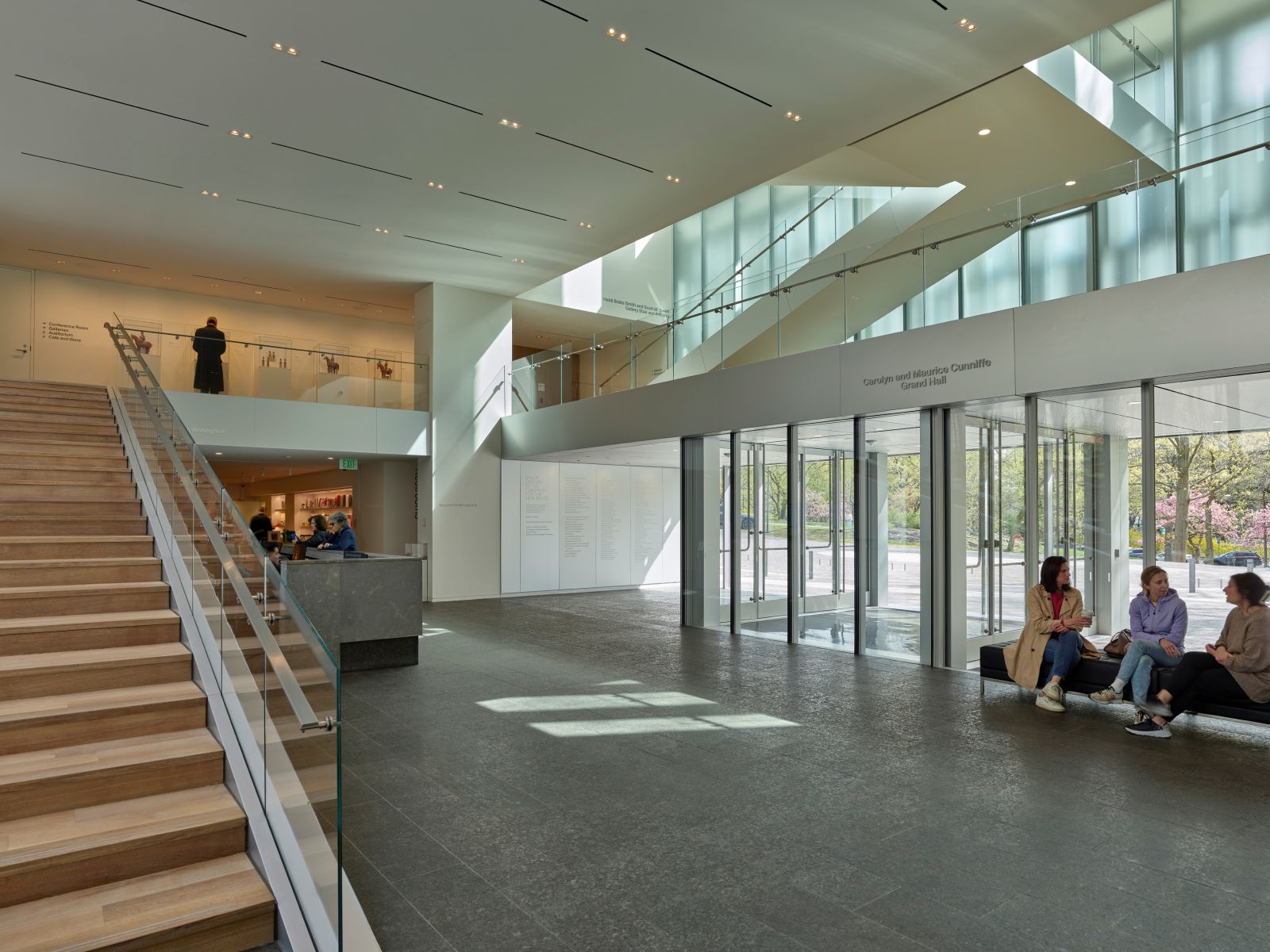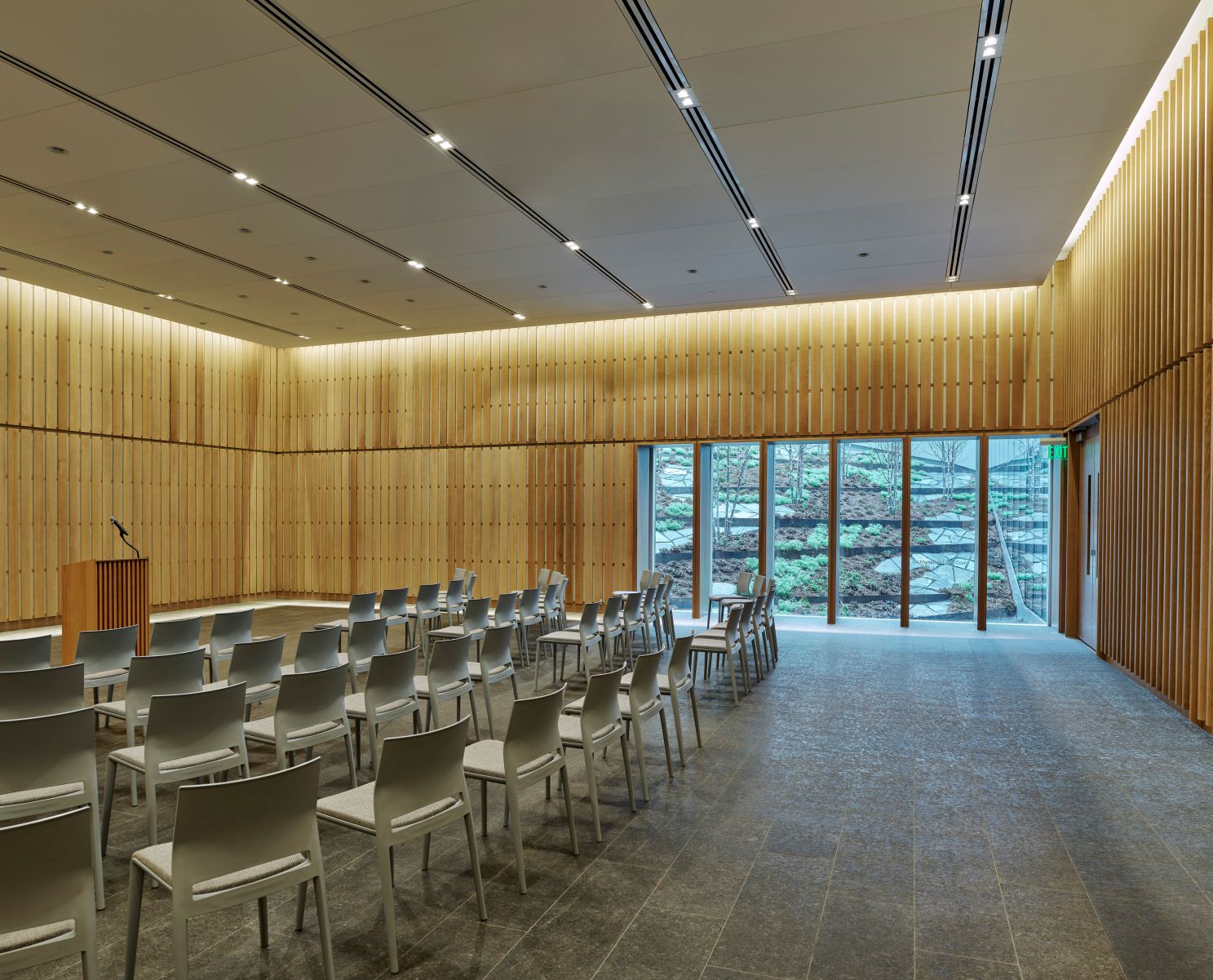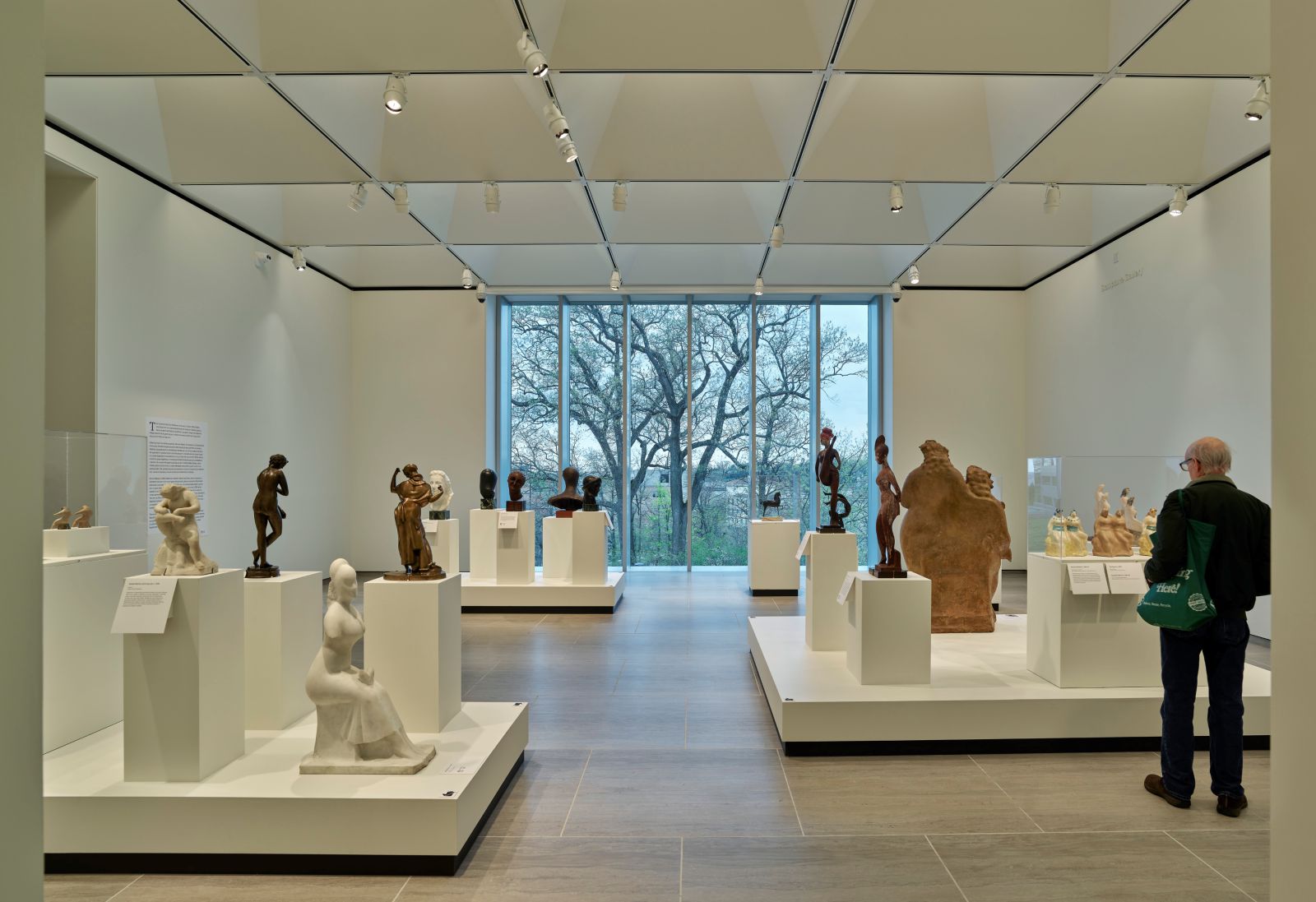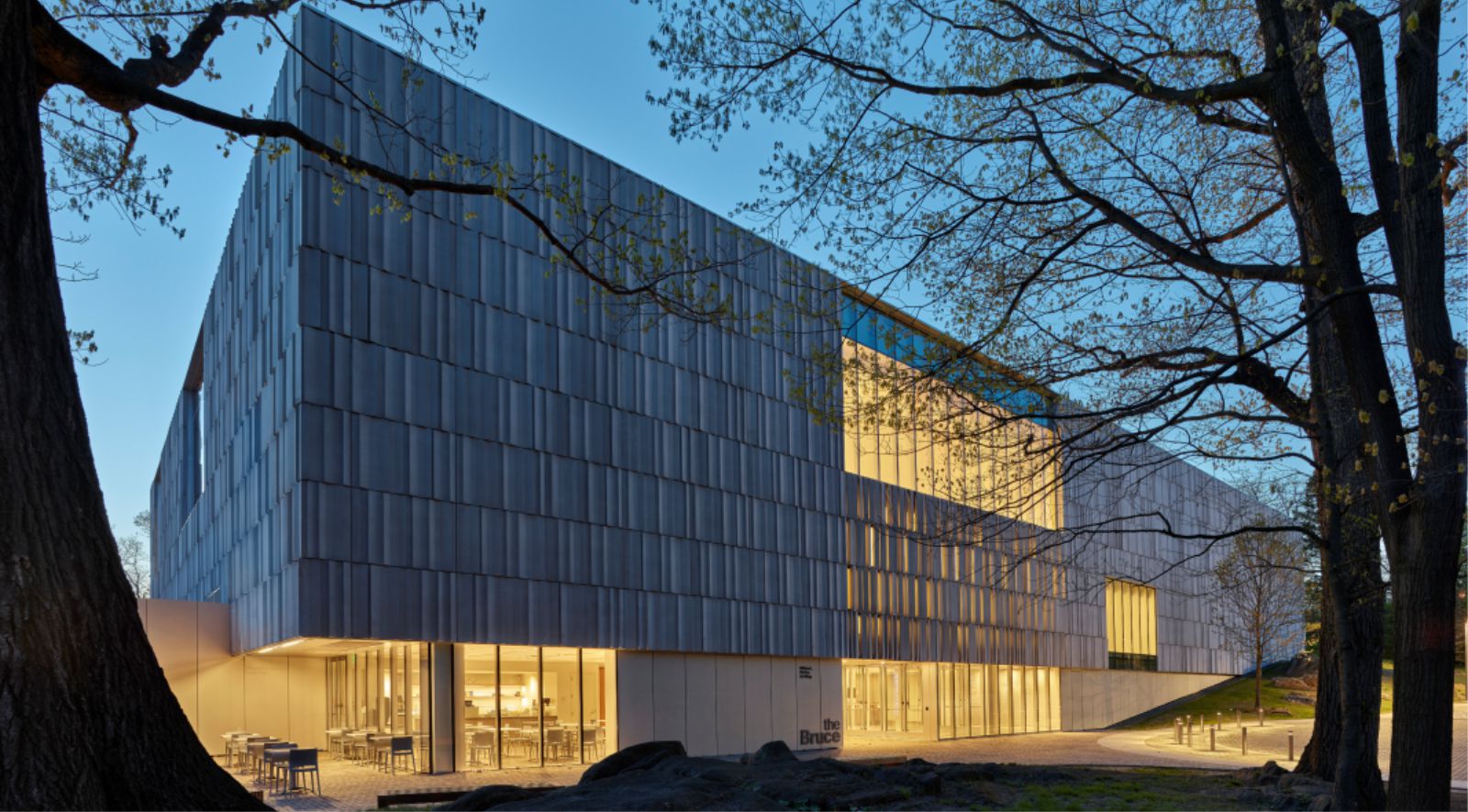The Bruce Museum is a regional cultural institution located in Greenwich, Connecticut with a multi-disciplinary collection and exhibition program bringing together art, science, and natural history. The resulting project is a comprehensive renovation of the existing museum’s 32,500-square-foot structure along with a 42,000-square-foot addition, providing permanent and changing gallery space, expanded collection storage, and a new public entrance lobby and lecture hall for the museum.
Comprising three floors, the expansion more than doubles the existing area of the facility and creates a welcoming visitor experience with clear circulation, generous galleries, and sufficient exhibition, storage, and archival spaces for the Museum’s growing collection. The new design addresses the problematic visitor wayfinding of the previous museum design. Prior to this expansion, the museum entry faced north towards noisy Interstate-95, located at the top of a hill and hidden from view of visitors arriving to the site.

The new design reorientates the entrance to face the adjoining Bruce Park, providing visitors with an immersive landscape experience prior to their entrance into the museum. Because the addition primarily stands apart from the existing house, the design team worked to develop a courtyard space between the two structures, one that serves to extend the park into the footprint of the museum to orient visitors as they move throughout the space. Since opening, the museum’s new spaces have quickly become a catalyst for diverse forms of engagement.
The double height lobby, café and gift shop seamlessly merge to create an open and free-flowing public space. The new lecture hall has become a hub for community programming, celebratory gatherings, and public lectures and receptions. New changing and permanent galleries enable the museum to host new, ambitious exhibitions and provide opportunities for engagement and education. Natural daylighting was fundamental to the design concept.

Openings in the façade suffuse the interior spaces with light, gradually receding in intensity as one moves into the collection galleries. Drawing inspiration from the unique geology of its site and surrounding region, the design team developed a delicately striated façade of cast stone and glass inspired by stone quarries found along the Connecticut coast. This exterior, animated by the play of light across the façade, dramatically changes appearance as the sun traverses the sky over the course of the day and time of year.
Design for Integration
At the outset of the project, the client set out several strategic objectives:
- Community: Create a cultural center that serves as a regional magnet and create a new, more welcoming public and community presence.
- Exhibitions: Provide state-of-the-art galleries to exhibit world-class science and art exhibitions at once.
- Education: Provide greatly expanded educational programs that serve diverse audiences and create new and renovated spaces that support both art and science education.
- Sustainability: Provide new revenue opportunities to ensure the new museum is sustainable into the future and reduce operational costs by improving building infrastructure.

The Bruce’s concept is unique in the museum world, distinct when compared to an organization like the Smithsonian, where buildings exploring different topics exist under the umbrella of the institution but are housed in separate facilities. In short, the Bruce bills itself as the place “where art meets science,” and combines the two under one roof, with unique opportunities for curation and interaction between galleries dedicated to each.
A renewed home for its science exhibits and instruction space were simultaneous additions. The Bruce maintains a world-class collection of minerals and gems, and permanent exhibits dedicated to the rich life of penguins and dinosaurs. In designing a project that would spark wonder in visitors, the team naturally drew inspiration from the museum’s surroundings, both the landscape of its site with its exposed stone outcroppings and the material quality of the historic stone house. The design concept melds two precedents using stone as a common denominator—coined “quarry” and “lace.”

Design for Ecosystem
The Bruce Museum exemplifies the seamless integration of architecture with natural landscape. As conscientious stewards of the environment, the design team created a symbiotic relationship between the museum and its surrounding ecosystem. The addition was mindfully designed to orient the new entrance towards neighboring Bruce Park, inviting visitors on an immersive journey through nature before stepping into the museum. Within, the connection remains. A courtyard between the existing and new building mirrors the park’s verdant beauty, a captured space the design team coined a “diorama”—an extension of the park into the museum.
Design for Water
Careful selection of regional vegetation effectively minimizes water usage, with native plants requiring less irrigation. A thoughtful stormwater management system ensures that 100% of rainwater is collected on-site, preventing runoff and potential negative impacts on neighboring Greenwich Harbor. The design does not just conserve water but also supports the health of the regional watershed. By ensuring that all water falling on the site is absorbed or held on site, the museum contributes to a more sustainable water ecosystem and aligns with principles of responsible water stewardship.

Design for Energy
The Bruce Museum’s energy-efficient design is a testament to forward-thinking strategies marrying aesthetic and performance. A prominent example is the facade’s “lace wall”—one of the big architectural moves that functions as a thermally-broken enclosure, thanks to structural thermal isolators. These precast pieces, hung from a stainless-steel frame, maintain an airtight, energy-efficient facade, reducing the museum’s overall energy demand. Moreover, the museum employs state-of-the-art, highly energy-efficient air handling units and a dehumidification system.
Design for Change
The museum’s sustainable design principles also contribute to its resilience against environmental change. By prioritizing energy efficiency and resource conservation, the museum demonstrates a commitment to minimizing its environmental footprint. These design elements, including energy-efficient systems and sustainable water management, support the museum’s passive survivability, ensuring that it can continue operating efficiently in the face of environmental or infrastructure challenges.
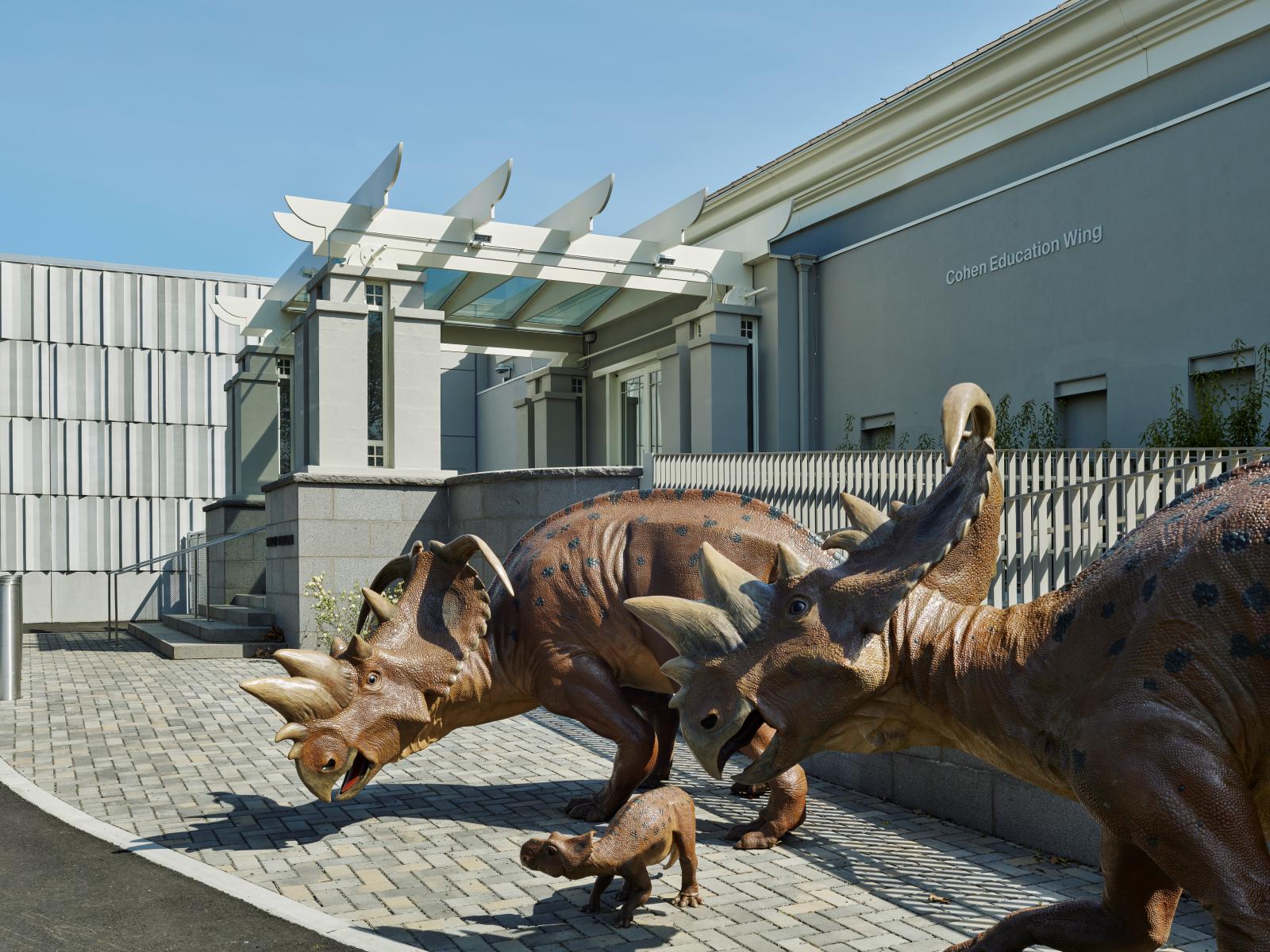
- Location: Greenwich, Connecticut, USA
- Architect: EskewDumezRipple
- Project Team: Steve Dumez, Noah Marble, Shawn Preau, Javier Marcano, Haley Allen, Guan Wang, Vanessa Smith-Torres, Kyle Digby, Sam Levison, Mark Thorburn, Max Katz
- Geotechnical Engineer: Melick-Tully and Associates
- Landscape: Reed Hilderbrand
- Lighting: Fisher Marantz Stone
- Acoustical Engineer: Jaffe Holden
- Theatrical/AV: Jaffe Holden
- Security: Ducibella Venter Santore
- Food Service: Futch Design Associates
- Museum Programming: M. Goodwin Museum Planning
- Envelope: Simpson Gumpertz & Heger
- Cost Estimating: Stuart-Lynn
- Code Consultant: Bruce J. Spiewak, Consulting Architect
- Commissioning: The Stone House Group
- Contractor: Turner Construction
- Owner’s Representative: Stone Harbor Land Company
- Area: 42,000-square-foot
- Year: 2023
- Photographs: Tim Hursley, Courtesy EskewDumezRipple
